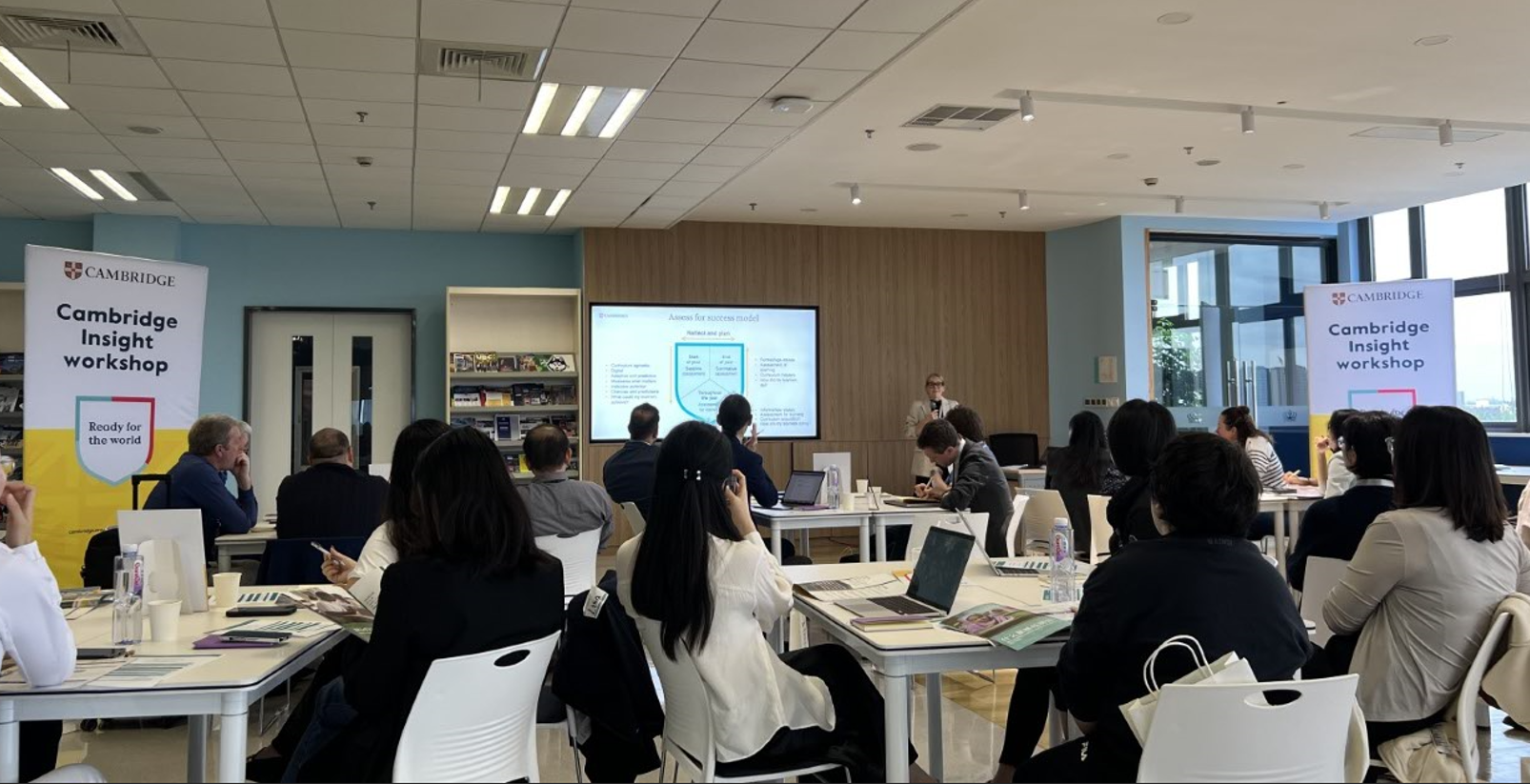Insight in China
Redefining success and planning for a digital future, find out what we learned when we visited international schools on our recent trip to China.

Login | Support | Contact us
Kate Bailey : Feb 12, 2019 1:48:00 PM
4 min read

"To be able to evaluate impact, we need to know where we are starting from. For this we need baseline data. From this starting point, we can evaluate learners’ progress and the impact of our teaching or a specific intervention..."
Getting Started with Evaluating Impact, Cambridge Assessment International Education, Teaching and Learning Team
We know it is vital that, as teachers, you have access to reliable information to support you in making the best decisions so you can transform the academic outcomes of the children you teach.
There are many ways you can get an understanding of students’ starting points, including observation, quizzes, projects, essays, exams, formative assessment and so on.
However, this can be time-consuming and while you may have a general understanding of the individual students in your class, it doesn’t give you a consistent, comprehensive, whole class or whole school profile of all student needs.
Cambridge Insight baseline assessments help schools understand their students' needs, measure each individual's aptitude for learning and their potential, and measure the impact they have on learners as they progress through school.
Using a good, standardised baseline assessment from an external provider that is founded on really robust research gives you a comprehensive assessment of each students’ readiness for learning and their potential for growth.
Standardised, baseline assessments can help you improve teaching and learning in so many ways when used alongside other data and when you are making instructional decisions.
Cambridge Insight assessments:
Using our baseline assessment, you get immediate and accurate information to help you find out where your students are on their learning journey.
But with so much data available to improve student achievement, where do you start?
The increased use and variety of assessments, as well as more sophisticated technology, has made more data available in schools than ever before. The use of multiple data sources allows you to form a more comprehensive picture of the students’ understanding. Our standardised baseline assessments give you a snapshot of performance as a starting point for open conversations with students and parents about their progress and how they can move their learning forward. They can form part of a school's overall assessment approach, alongside a range of formative and summative assessments, teacher observations and judgements.
We are proud of our long-established reputation in the field of educational assessments, formerly as the Centre for Evaluation & Monitoring (CEM) with Durham University and currently as part of Cambridge University. For the last 40 years we have supported teachers with assessments for children of all ages, from early years to post-16 education. What started as a small-scale research project in 1983 is now trusted by professionals worldwide.
"Good quality baseline assessments provide a trusted external reference of a pupil’s starting-point performance, indicating what students already know and what they can do, and whether it is below, above or broadly in line with the national average."
Each year, we process the results for hundreds of thousands of students taking our assessments. The results help inform teaching and learning strategies; help teachers and school leaders to set realistic and challenging targets for their students and for the school as a whole; and help school leaders evaluate the overall performance of their school in comparison to others.
Given the importance of the results of the assessments, data quality, validity and reliability is fundamental to our mission of providing valuable and reliable educational insights.
For many teachers, a new year 7 class can be a mystery. We know that students can always surprise us, and for some it can take some time to reveal their learning needs and potential. Without reliable baseline data, how do you know if what you are doing is right for each child? And how can you set the right goals, drive student motivation and measure the progress they make?
A baseline assessment can empower you to really make a difference as it gives you information on what your students know and can do right from the start, saving you and your students time for teaching and learning.
Baseline data helps you to adjust your planning and inform decisions about a whole range of strategies such as deciding student groups, arranging seating plans, and deciding the most appropriate teaching and learning activities.
Using baseline assessment data can help you to more efficiently focus effort and resources on ensuring students are supported and sufficiently challenged and help you to teach effective and differentiated lessons, ensuring rapid progress for all students.
Our baseline assessments are adaptive. This means that during the assessment, an algorithm continually adjusts the difficulty of the questions based on each student's performance. As a result, every student encounters questions that are specifically tailored to their abilities throughout the assessment.
When a student consistently performs well and answers questions correctly, the algorithm responds by offering more challenging questions. Conversely, if a student struggles to provide correct answers, the algorithm adapts by presenting slightly less difficult questions.
The ultimate goal is to provide questions that align with the student's skill level, making the assessment personalised, more accurate, quicker, a better assessment experience and fairer.
Once you have discovered students' current learning stages, you can determine how much progress students should make to help them reach where they want to be. Accurate data will help to set appropriate and challenging targets for a whole class, differentiated groups or individual students.
We give you the Insight tools to immediately boost your students' outcomes. These tools pinpoint your students' starting point and ability to learn. They also predict their exam performance, inform target setting, and allow you to create aspirational and achievable goals to unlock your students' potential.
Baseline assessments can be pivotal in guiding students' learning, as they establish a starting point to understand what students know and can do right from the start.
Our baseline assessments provide you with valuable insights to tailor your instruction, set achievable goals and track progress over time.
They form the foundation for an effective, personalised and fulfilling learning journey.
Kate Bailey has worked at Cambridge Insight (formerly CEM) for 29 years. Her various roles in the business have brought her into almost constant contact with teachers and educational professionals. Kate is passionate about insight assessments helping schools understand students’ needs, unlocking their potential and increasing the value a school can add to their students’ lives.

Redefining success and planning for a digital future, find out what we learned when we visited international schools on our recent trip to China.

By Nicki Devon, Deputy Head Academic, Eltham College Junior School, UK Every Assessment Lead wants a great assessment model for their school, but how...

Assessments are a vital part of school life. There are many different types of assessments, they happen at different points in a school year and for...